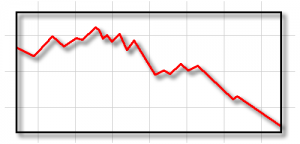For Landlords, Boosting Your Cap Rate Gets You a Better ROI
So you’re thinking about investing in a multifamily real estate property. Or maybe you’re a current owner looking to sell and want to attract higher bids. Whatever your situation, there are some financial elements you need to master on your way to becoming a successful real estate tycoon.
Capitalization Rate
There’s no way to make moves in the commercial real estate investment market without understanding capitalization rate or cap rate. A cap rate reveals the potential rate of return on your real estate investment. A cap rate can help parties on both sides of a real estate transaction evaluate whether they’re making a smart play. The higher the cap rate, the greater the return on investment. Calculating the cap rate is a pretty straightforward equation.
• Cap rate = net operating income (NOI) / Current Market Value
Net Operating Income
While the current market value of a property is pretty evident, the net operating income portion of the cap rate equation may leave you scratching your head. Fear not, it’s actually pretty simple.
• NOI = Total revenue – total expenses
NOI is just all revenue from a property minus expenses. Your revenue will include the money received from tenant rent payments, parking garage charges, cash from coin-operated laundry and vending machines, and any other money generated from the property. Now, your operating expenses will include property taxes, insurance, utilities, manager fees, maintenance fees, and reserves for future major repair or replacements. Add up all your revenue, subtract from it all your expenses, and you’re left with your NOI – easy peasy.
Increasing Your NOI (and Cap Rate!)
For current or potential investors looking for ways to boost a property’s cap rate in order to achieve a higher return on investment, there are a few options available. You can raise the rent, parking garage fees, or the price to use coin-operated machines. But rent stabilization may only allow limited rent increases each year. These property owners and others can look at the other part of the NOI equation and decrease total expenses. While you may have no control over property taxes and insurance costs, you have some more flexibility around utilities, notably, the property’s water bill.
Owners that upgrade to ultra-high-efficient fixtures can decrease their water expenses, and reduce pricey maintenance issues that come with using outdated equipment. While there are upfront costs associated with this conversion effort, the upgrades pay for themselves in the form of lower water bills and make a property more financially attractive by boosting its cap rate.
See how Niagara products can help improve your cap rate!
Back to Blog


